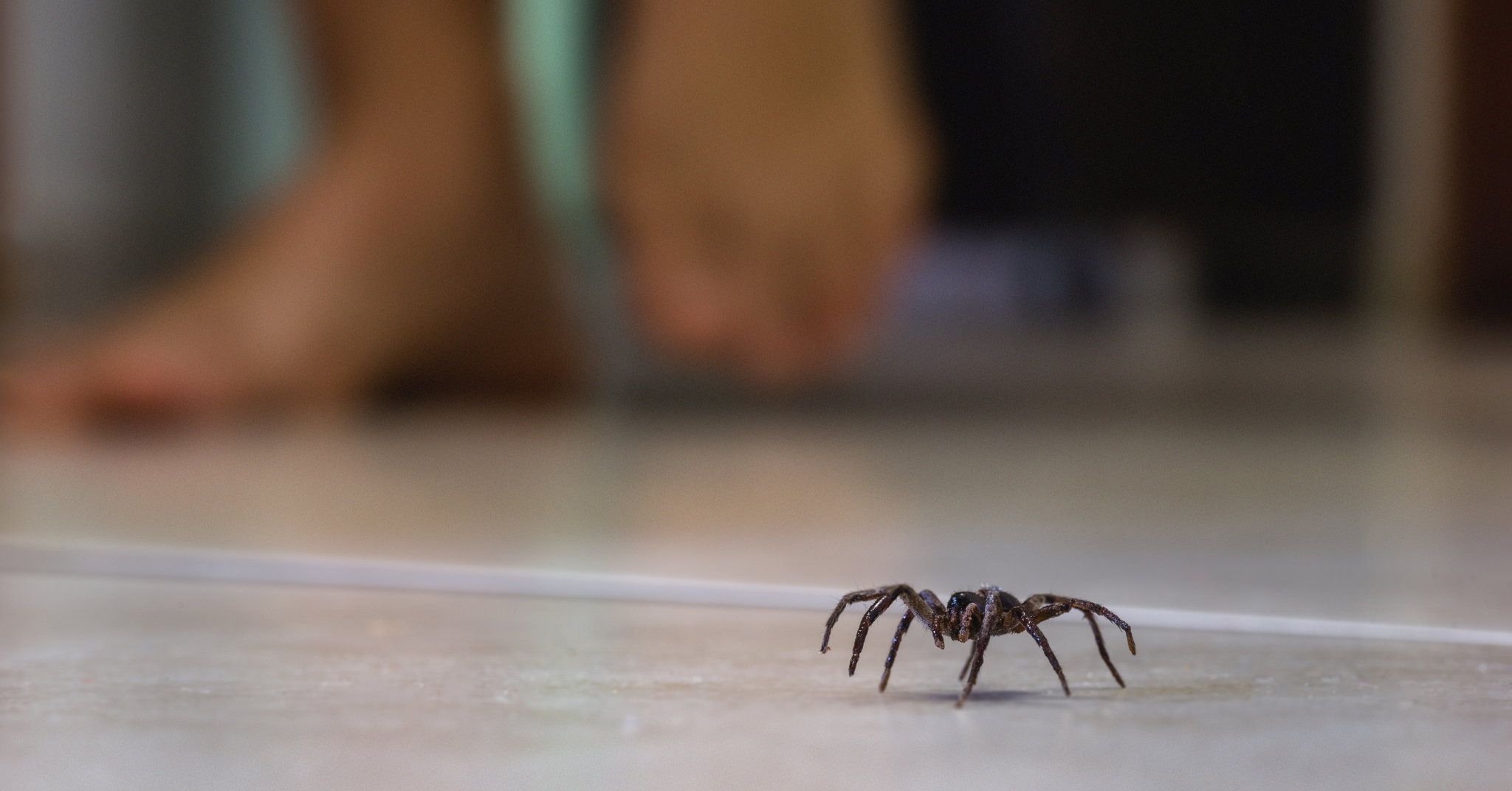What Are Black House Spiders?

The black house spider (Badumna insignis) is a common arachnid native to Australia. Its messy webs can be unsightly in homes and tend to clutter windowsills and corners. Although they are similar in color, the black house spider is not to be confused with the black widow.
Females typically don’t leave their nest unless forced to, and thus wait for a mate to approach. When a male spider approaches, he will tug on a web to get the female’s attention. After insemination, the female creates several silk sacs for her thousands of eggs and remains with the eggs until they hatch.

WHAT DOES A BLACK HOUSE SPIDER LOOK LIKE?
As the name suggests, black house spiders are generally black in color and can be found inside residential dwellings. Black house spiders have rectangular heads and faint gray stripes and spots on their back (though these markings are sometimes not visible). Black house spiders grow to be about 18 mm long (¾ inch). The male black house spider is a bit smaller than the female.

BLACK HOUSE SPIDER VS. GREY HOUSE SPIDER
The gray house spider is a close relative of the black house spider that can sometimes be confused for one another. Although also native to Australia, this species can be found today in the United States, Mexico, Japan, and Uruguay. In the U.S., gray house spiders are more often found in nature than in homes and prefer temperate climates.
Like the name implies, grey house spiders are typically light grey in color and smaller than black house spiders by a few millimeters.

BLACK HOUSE SPIDER VS. BLACK WIDOW SPIDER
Black house spiders should not be confused with black widows as they have several differing features. For example, black house spiders have velvety hairs along their backs, while the black widow’s back is bulbous, hairless, and shiny. Additionally, the black house spider’s underbelly is plain, while black widows have a distinct red hourglass shape on their bellies.

WHAT DO BLACK HOUSE SPIDERS EAT?
Black house spiders prey on insects like butterflies, beetles, bees, and ants. To attract their prey, black house spiders often build webs in tree holes or broken bark. Unsuspecting insects gather in those areas to feed on sap and get caught in black house spiderwebs.

WHERE DO I FIND BLACK HOUSE SPIDERS?
The black house spider primarily lives in Australia but has been found in New Zealand and Japan as well. Outside, these spiders often live on rough-bark trees, rocks, and logs and build lacy webs with a circular opening that leads into their hiding spot.
Indoors, the black house spider builds its webs along cracks in walls or windows. In fact, they’re often called window spiders for this reason.

IS A BLACK HOUSE SPIDER POISONOUS?
Like most spiders, the black house spider is venomous but prefers to remain aloof, away from humans. However, if the black house spider feels threatened, it can deliver a very painful bite when disturbed. Its venom causes a reaction on the skin but doesn’t typically lead to serious symptoms.
If you are bitten by a black house spider, be sure to clean the affected area and apply a cold compress to help with swelling. You may want to take pain medication or an antihistamine as well to reduce redness and discomfort. Be sure to monitor the bite, and watch for signs of infection like red streaks, warmth, or pus at the site of the wound.
Like any venomous bite, there is also a chance of an allergic reaction. If you experience an allergic reaction to black house spider venom, seek medical attention immediately. Watch for signs of anaphylaxis like tightness in the throat, facial swelling, and trouble breathing.
GET HELP GETTING RID OF SPIDERS
For help controlling spiders throughout your house and yard, contact the professionals at Joshua’s Pest Control. Our friendly experts can assist with pet- and family-friendly treatments that can help you reclaim your home. Contact Joshua’s Pest Control today to schedule your first treatment.
SOURCES
- https://australian.museum/learn/animals/spiders/black-house-spider-badumna-insignis/
- https://animalcorner.org/animals/black-house-spider/
- https://spideridentifications.com/grey-house.html
- https://www.australiawidefirstaid.com.au/resources/black-house-spider
Author Bio
Courtney Enzor has worked in the pest control industry for about a decade. From helping you build a fly trap to giving you the best tips for identifying various bugs, she loves answering all your pest-related questions and sharing her pest-related expertise through writing. At the end of the day, she hopes her content will help people avoid mishaps and keep families happy and healthy!

